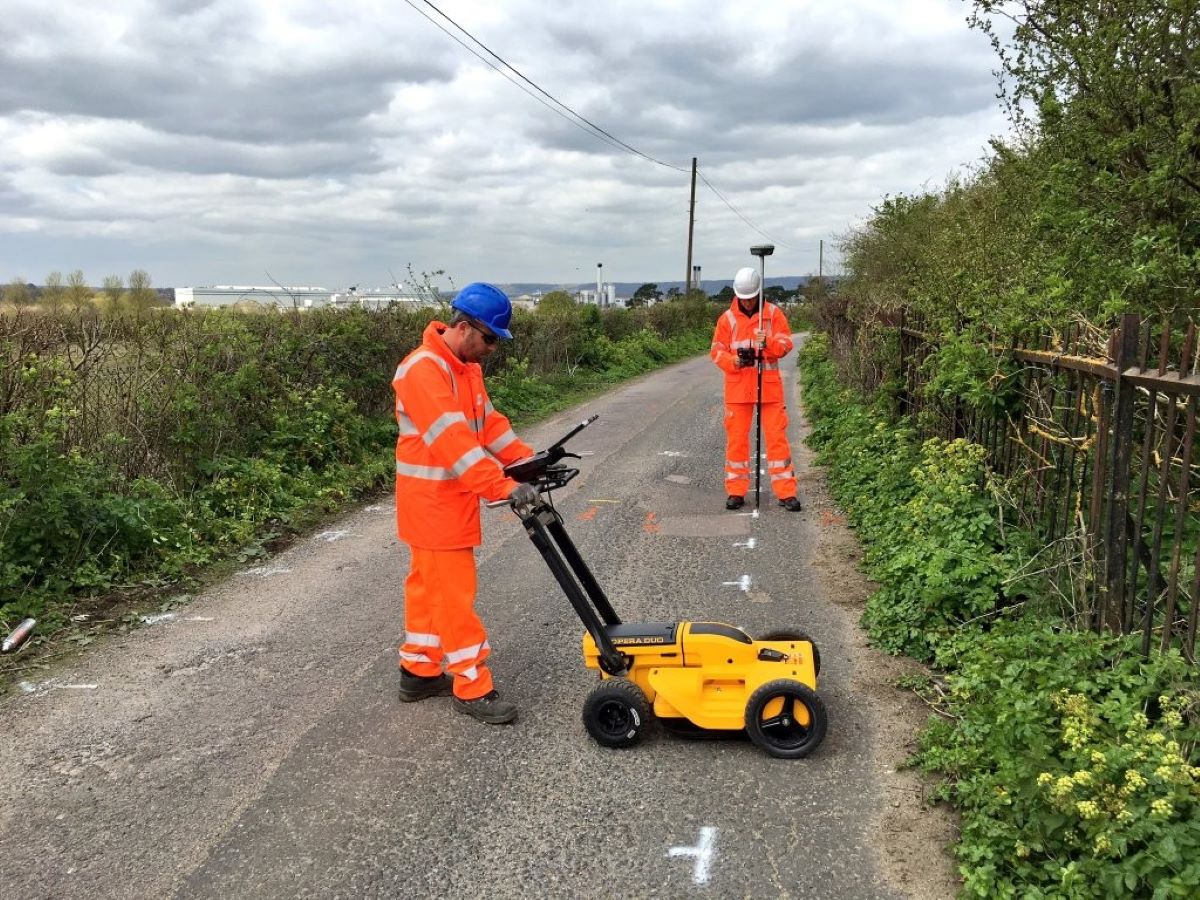What is a Utility Inspection and Why is It Important?
Utility inspections are critical assessments performed on various utility systems, including electricity, water, gas, and sewage. The main aim of these inspections is to ensure that the utilities are functioning optimally and adhering to safety standards. Utility inspections are essential not just for compliance but also for safeguarding lives and property.
Understanding the Concept of Utility Inspection
Utility inspection involves a thorough examination of utility systems to identify any irregularities, risks, or areas in need of maintenance. These inspections can vary in scope and type, depending on the utility involved and the regulatory requirements of the jurisdiction. Regular inspections are essential not only for compliance with local regulations but also for ensuring the safety and reliability of utility services that communities depend on daily.
Definition of Utility Inspection
A utility inspection can be defined as a detailed evaluation conducted by trained professionals who assess the operational capacity, safety, and regulatory compliance of utility infrastructures. This includes examining physical components, documentation, and the operational processes in place. The professionals conducting these inspections often hold certifications and have extensive training in their respective fields, allowing them to identify potential issues that could lead to service disruptions or hazards.
The Different Types of Utility Inspections
Utility inspections can be categorized into several types based on the specific utility involved. These types include:
- Electrical Inspections: Focus on power lines, transformers, and circuit breakers to ensure electrical systems are safely managed.
- Water Quality Inspections: Assess the quality of water being supplied for usage, checking for contaminants and ensuring compliance with health standards.
- Gas Inspections: Evaluate pipelines, meters, and safety valves to prevent leaks and ensure safe gas delivery.
- Sewage and Wastewater Inspections: Examine treatment plants and sewer systems to ensure that waste is being processed effectively and without environmental harm.
Each type of inspection plays a crucial role in maintaining the integrity of the utility systems. For instance, electrical inspections not only help in preventing electrical fires but also ensure that the power supply remains stable and efficient. Similarly, water quality inspections are vital for public health, as they help detect harmful bacteria or chemicals that could pose serious health risks to the population. With the increasing emphasis on sustainability, inspections are also evolving to include assessments of how utilities impact the environment, prompting utilities to adopt greener practices and technologies.
Moreover, the frequency of these inspections can vary significantly based on the utility’s operational history, the age of the infrastructure, and any previous incidents that may have occurred. For example, older gas pipelines may require more frequent inspections due to their susceptibility to corrosion and leaks, while newer systems might be monitored less often but still undergo rigorous testing to ensure they meet safety standards. As technology advances, many utilities are incorporating smart monitoring systems that allow for real-time data collection and analysis, further enhancing the effectiveness of utility inspections.
The Importance of Utility Inspections
Utility inspections play a vital role in multiple facets, including safety, compliance with legal standards, and maintenance cost-efficiency. By properly conducting these inspections, entities can avoid significant issues down the line.
Ensuring Safety and Compliance
Safety is the foremost priority in utility management. By regularly inspecting utilities, potential hazards can be identified and mitigated before they present serious risks. Compliance with governmental regulations is another crucial aspect that utility inspections uphold. Failing to meet these requirements can result in severe financial penalties or even operational shutdowns.
Moreover, the implications of neglecting safety and compliance extend beyond immediate financial repercussions. Inadequate inspections can lead to catastrophic events, such as gas leaks or electrical fires, which not only threaten public safety but can also result in extensive property damage and loss of life. Therefore, organizations must prioritize comprehensive training for inspection personnel, ensuring they are well-versed in the latest safety protocols and regulatory changes. This proactive approach not only safeguards the community but also fosters trust between utility providers and the public.
Preventing Unexpected Failures
Unexpected utility failures can be costly and disruptive, often impacting large populations. Regular inspections can proactively identify wear and tear, outdated materials, and other indicators that something may soon fail. By addressing these issues early, utilities can maintain consistent service quality and avoid the snowball effect that often results from ignoring these warning signs.
In addition to the immediate benefits of preventing failures, routine inspections also contribute to long-term sustainability. By investing in regular maintenance and timely upgrades, utility companies can extend the life of their infrastructure, reducing the need for costly replacements. This not only helps in managing budgets more effectively but also minimizes environmental impact by reducing waste. Furthermore, the data collected during inspections can be invaluable for future planning and resource allocation, allowing utilities to make informed decisions that enhance operational efficiency and service reliability.

The Process of a Utility Inspection
Utility inspections follow a structured process involving several key phases, from preparation to final reporting. Each phase is essential for guaranteeing an effective inspection and subsequent actions.
Pre-Inspection Preparations
Preparation for a utility inspection involves gathering historical data on the utility systems, reviewing past inspection reports, and selecting appropriate tools and methodologies for the assessment. Inspectors may also schedule meetings with key stakeholders to understand specific concerns or queries they may have. This phase is crucial, as it sets the foundation for a thorough inspection; understanding the context and previous issues helps inspectors to focus on areas that may require special attention. Additionally, inspectors often conduct site visits prior to the formal inspection to familiarize themselves with the layout and any potential hazards that could affect the safety and efficiency of the inspection process.
During the Inspection
During the actual inspection, trained professionals carry out visual assessments and utilize various tools to assess the condition of the utility systems. This could involve performing tests, taking measurements, and documenting observations. Inspectors must follow standardized protocols to ensure accuracy and reliability of the findings. They may use advanced technology such as drones for aerial inspections or thermal imaging cameras to detect heat loss in electrical systems. These modern tools not only enhance the precision of the inspection but also allow for a more comprehensive evaluation of the systems in question, identifying issues that may not be visible to the naked eye. Furthermore, inspectors often engage in real-time data analysis, allowing them to adjust their approach based on immediate findings.
Post-Inspection Procedures
Once the inspection is complete, the data collected is analyzed, and a comprehensive report is generated. This report typically includes observations, recommendations for repairs or upgrades, and an overall evaluation of the utility system’s health. Stakeholders are presented with this report to discuss possible action plans. In addition to the main report, inspectors may also provide supplementary materials such as visual aids or graphs that illustrate key findings, making it easier for stakeholders to grasp complex data. Follow-up meetings are often scheduled to ensure that all parties understand the implications of the findings and to prioritize the necessary actions. This collaborative approach not only fosters transparency but also encourages proactive measures to enhance the safety and efficiency of utility systems, ultimately benefiting the community at large.
Who Conducts Utility Inspections?
A variety of professionals are involved in the conducting of utility inspections. They are trained in specific fields and are often required to hold relevant certifications to ensure effectiveness and credibility.
Roles and Responsibilities of Utility Inspectors
Utility inspectors have a multifaceted role. They not only perform the inspections but also provide guidance on compliance with regulations, suggest maintenance practices, and advise on necessary improvements. Their insights contribute greatly to the overall management of utility infrastructure. Furthermore, utility inspectors often collaborate with engineers and project managers to develop strategies for upgrading existing systems and implementing new technologies that enhance service delivery. This teamwork is essential for identifying potential risks and ensuring that utility services remain safe and reliable for the public.
Qualifications for Utility Inspectors
Qualifications for utility inspectors vary depending on the specific utility type but generally include a combination of education and experience in engineering or a related field, alongside specialized training in inspection techniques and compliance regulations. Many inspectors also possess certification through recognized organizations, further emphasizing their expertise in the field. In addition to formal qualifications, effective utility inspectors often exhibit strong analytical skills, attention to detail, and excellent communication abilities, which are crucial for conveying complex technical information to stakeholders. Continuous education is also a significant aspect of their profession, as they must stay updated on evolving regulations, technologies, and best practices in utility management to maintain their effectiveness in the field. You may like to get more about the benefits of utility locating please visit https://vacant-land-for-sale.net/the-benefits-of-underground-utility-locating-for-builders/ to get your vision.
The Impact of Neglecting Utility Inspections
Neglecting utility inspections can have dire ramifications, affecting everything from individual safety to community well-being. The impacts can be immediate and long-lasting, making regular inspections crucial.
Potential Risks and Consequences
When utility inspections are ignored, the risks increase dramatically. There is the potential for accidents or failures that could lead to property damage, injuries, or even fatalities. Additionally, inefficient systems may incur higher operational costs, which may ultimately be passed down to consumers. For instance, a failure in a gas line can result in catastrophic explosions, while neglected electrical systems can lead to fires that devastate entire neighborhoods. The ripple effects of such incidents can strain local emergency services and disrupt community life, highlighting the interconnectedness of utility reliability and public safety.

Legal Implications
On a legal front, failing to conduct required inspections can lead to lawsuits, penalties, or loss of licenses for utility providers. Regulatory bodies impose strict compliance expectations, and any oversight can result in significant legal ramifications, including criminal charges in extreme cases of negligence. Furthermore, the reputational damage to a utility company can be severe, leading to a loss of consumer trust and a decline in business. Companies may find themselves facing not only financial repercussions but also an uphill battle in restoring their public image, which can take years to mend. This underlines the importance of not just adhering to legal standards but also fostering a culture of safety and accountability within organizations.
In summary, maintaining a robust utility inspection regimen is paramount for ensuring safety, compliance, and efficient operations within utility systems. By recognizing the significance of these inspections, stakeholders can both protect their investments and enhance the reliability of critical services provided to communities. Regular inspections not only safeguard infrastructure but also serve as a proactive measure to identify potential issues before they escalate, ultimately contributing to a more resilient and sustainable community infrastructure.

